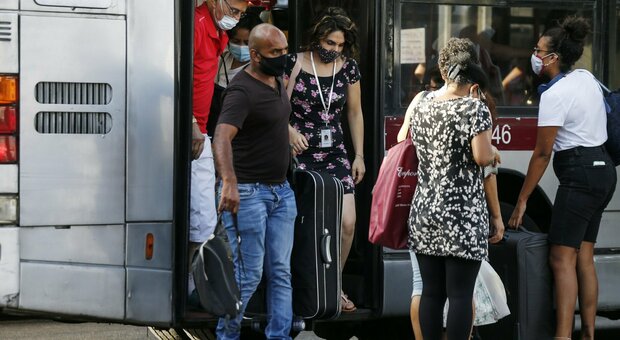New staggered hours for commercial activities and offices, but not only. After the expiration on July 31 of the last ordinance of the outgoing mayor Virginia Raggi on the reshaping of the opening hours for shops with a view to anti-crowding on public transport, the Prefecture starts a new confrontation with local authorities, ministries, universities and the main tertiary associations and trade unions for the times of the city. Because at Palazzo Valentini they will not be able to arrive unprepared on October 15, when – with the “end” of smart working – in the capital there will be at least 1.2 million more people around. This is why it is necessary to review the timetables, not only for the opening and closing of commercial and neighborhood activities, but also of public offices (of the ministries and of Rome Capital), and of the entire production sector that moves in the capital.
Deputy Commissioner Schilirò to the demonstrators: “The Green pass is illegitimate.” Lamorgese: «Very serious statements». Disciplinary action started
Shops and offices: this is how the opening hours change
Almost certainly there will be a range of staggered bands to avoid crowds on buses and metro and traffic. But we will also work to recalibrate the presence of public transport on the roads. Prefect Matteo Piantedosi has given a mandate to the Capitoline Mobility Agency to make a plan. A table will be created – the first meeting is scheduled for tomorrow – with the mobility managers of ministries, local authorities and above all large private companies (Eni and Enel just to name two), representatives of schools and universities, trade unions public employment and the private sector, as well as the Municipality and the Region. As far as we know, from the 15th we will have 1.2 million more people around and 700 thousand are public employees (ministerial in the first place). There are three solutions (at the moment) foreseen: meanwhile, stagger the entry and exit times as is already the case for schools. The ministers, for example, could open at 10, the universities will hold classes in mid-morning, for the shops the old scheme is more than a hypothesis with the groceries that raise the shutters between 7-8 and the others after 10.30 . Another solution will be to encourage alternative forms of transport, including soft mobility with scooters and bicycles to reach the offices from the exchange parking lots. Furthermore, employees will be told not to use their own cars, they will be able to agree with colleagues to do the “carpooling”. Above all, shuttles will be created for the main ministries and large companies, which will start from the exchange parking lots on the model of the S lines launched for students. On the local public transport front, Atac will be asked to immediately reopen the Castro Pretorio stations (not far away there are major ministers such as the Mef, Agriculture and Defense or the FS offices) and Policlinico, which in addition to the hospital complex near companies and trade union offices.
Rome, the Ama now cuts the scavengers. But the doctors: “So health is at risk”
I means
Atac for its part, if there is greater demand from the prefect, does not rule out increasing the races. For example, he could ask the private individuals to whom he has already entrusted the lines to put more buses, thus freeing his other buses from towards the Center. In theory there would be no auti, but the ranking of the last competition is not excluded immediately. From via Prenestina it should be noted that the bulk of the ministers focuses on the subway stops. Compared to 2019, and with only school students in attendance, today line A records a decrease of 40 percent in attendance, the B of 68. Consequently, if it is possible to get the travet in after 10, the ministerial use the subways without risking looks. Then there is the smart working node. which in fact only in the public will not be prolonged. Mobility agency and prefecture are ready to ask companies to not agile forms of work. For their part, large companies and trade unions are already closing agreements to keep the bulk of the staff at home until 2022. Thus, from 15 October, there could be 700 thousand fewer people in the morning on the 1.2 million expected more.
Influenza and Covid, double vaccine: “No risk”
© REPRODUCTION RESERVED

